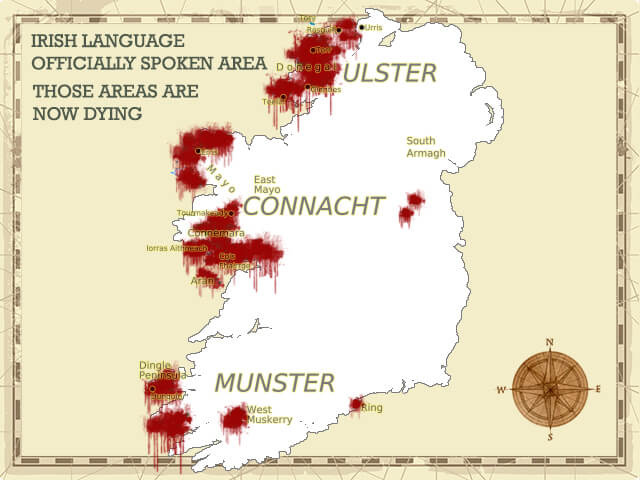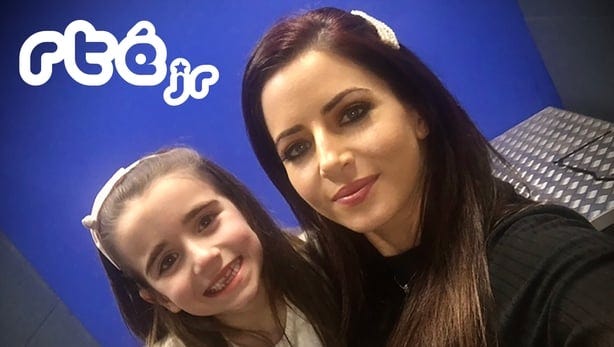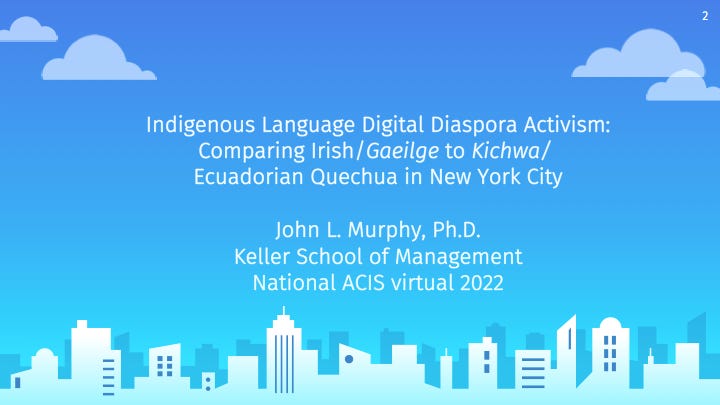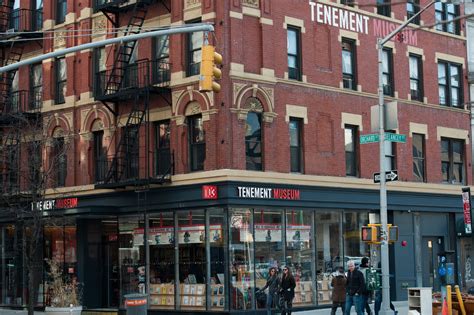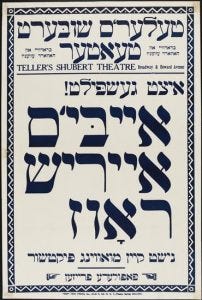I can’t take credit for the bilingual pun in the Irish words. Dáragh Ó Séaghdha in his 2017 Motherfoclóir, based on his @theirishfor Twitter account, beat me to it, given “foclóir=dictionary.” A clever call. Curious about how language death can occur rapidly among descendants of immigrants, as well as native residents of a mother, or fatherland. Thinking of my father-in-law, who grew up in the Depression in Seattle conversant in Yiddish, as one of its proverbial saws cuts to the ancestral bone, “the grandson remembers what the son forgets.” As the 1911 census in the then-Crown-occupied County Mayo eastern borderland with north-western Roscommon, where my roots lie, recorded, my grandparents registered as fluent in both the tongues of their (and yours and my) tacit overseers, and the ancient vernacular of their (and my) indigenous forebears, from what on that island passed as prehistoric (i.e., no written documents), or at least 2200 years ago when “Celts” ruled. Before that, we have nearly no evidence of whatever those they supplanted, eliminated, mingled with, and/or over-ruled sounded like. Whereas Yiddish began over a millennium ago in the Rhineland.
Posted 2015. Some purists, dreamers, romantics and a few academics will disagree. After all, Yiddish has been often buried alive, while Welsh resists, as Cornish + Manx resurrected a nod.
The extremely quick erosion of Irish and of Yiddish came not that far apart. The areas to which the purported enclaves of the Gaeltachtaí: tallied regions where Twenty-Six County Republic’s bureaucrats for a century now have registered mythic Gaeilge’s ever-receding fringes on the Atlantic, storied heartlands for those supposedly reared in the nation’s “first official language,” as DeValera characteristically phrased its symbolic primary role, within obviously all-too-Anglophone reality (today, where at least a fifth of its prolific, polyglot recent inhabitants benefit from all but open EU borders, it’s claimed Chinese and Polish outnumber those daily chatting “as Gaeilge.”)
You can hear a mother and her daughter chat in Conamara (my dialect) Irish here.
As for Yiddish, emigration to the Americas, Western Europe, Oceania, and naturally Eretz Israel diminished its Ashkenazi polity, as pogroms, blitzkriegs, extermination, and assimilation conspired to multiply those survivors, as refugees or migrants, settlers of the Holy Land or greenhorns entering Ellis Island or Castle Garden. Ross Perlin in Language City (2024; my review), surveys a few among hundreds of tongues today among those flocking into NYC, although as with Yiddish, Italian, Irish, Greek, Cantonese, German, Ladino, and the like, their perpetuation among their offspring may be threatened as not only English but Spanish battle for street-wise domination.
Click here for Perlin’s Endangered Languages Alliance interactive Big Apple map.
For brevity, I’ll hush. As I have added my two cents/ dhá pheann/ iskay qullqi/ צוויי פּעניז presenting at two Irish Studies Conferences in 2021 and 2022 comparing/ contrasting the fortunes of Kichwa (aka Ecuadorian Quechua) and Gaeilge among their respective diasporas in NYC, digitally and physically (all I can excavate, post-Job-like subsequent “life changes,” are slides sans voiceover; believe you me, you’re not missing anything!).
This theme fascinates me, as one struggling for over half my life at least to master a poky semblance of my lost mother-tongue, and through whom, I aver surprisingly, by osmosis I realize I’ve picked up a “pintele Yid” of my late wife’s father. And her mother’s, via Philly and the Lower East Side circa Orchard St. of its once-burgeoning Yiddishkeit, now memorialized by Russ + Daughters’ pescatarian paradise (more on that lush noun in an etymological entry to follow on this blog; trigger warning as it features Jordan Peterson’s new We Who Wrestle With God: Biblical Perceptions of the Divine {my Goodreads review} of Hebrew mythic narratives; his spry interview with intransigent atheist Bill Maher’s worth your 90 minutes), and for my spouse, the wonderful Tenement Museum (tours of a “shanty-house Mick” and “M.O.T.” flat recreated among other ethnicities, with separate admission, ironically or lucratively).
Don’t bother with Katz’s Deli. Even this goyische kop, albeit circumcised, knows better. Instead, my spouse’d stroll to Economy Candy Store’s (the city’s oldest) WineGums and Dutch licorice as must-stops we’d make before we visited collegiate Son #2 then upstate. I’d get a Clark Bar. If I ever return I wonder if a orange jelly-chocolate foil’d patty endures. Loved ‘em, as with Rolo’s, Caravelles, and Regal Crown (via perfidious Albion aka England) Sour Lemon Drops. My teetolling dad’d dash into a liquor store to reward me and lil' sis, Hippie ‘60s, amid beautiful downtown of Laugh-In’s tagline.
While Yiddish and yuks oft nosh together, their twinning tangles in other “haimish” strands. Yesterday I covered Miriam Weinstein’s Yiddish: A Nation in Words (2012; my Goodreads review). A few weeks ago, I’d re-read and critiqued Michael Wex’s Born to Kvetch (2005; ditto). I open my Thanksgiving NYT feed (ha; I type this at and two hours past Andean sunset, listening to Bishop Barron discuss Aquinas’ proofs of God’s existence, Kierkegaard’s shortcomings about a “leap of faith,” Dostoevsky on love’s harsh and exacting reality, primacy of conscience, salvation beyond Catholicism for Jews and for upright, moral nonbelievers, re-Judaizing the Church, and the last three pontiffs…whew! with Ben Shapiro, solo for my favorite holiday first time ever, having supped on stewed pineapple with cacao nibs, and yogurt after breaking a measuring cup flour-filled for a try at my doughy favorite, white pizza—which my wife assembled from scratch, being as many of you know a skilled cook, last year for our first expat festivity, which likely in El Norte, as my dear friend observed, will presently go away the shamed blamed way of Columbus Day) to see the always welcome linguist, at Columbia, c/o the Ivory Tower’s Babel of Gotham City, fittingly, John McWhorter. I’ve long admired his refusal to kow-tow to Ivy League “mandarins.” I share his “Yiddish Is Thrillingly Alive” to bypass Grey Lady’s paywall. Coincidence?
If I tell you that there are languages other than English that someone in America could live a whole life in, which would come to mind? Spanish, maybe? Chinese? Both are spoken in (among many other settings) tight-knit communities that are continually refreshed by new immigration. Pondering a little further, you might think of rural Amish communities that speak dialects of German.
I doubt that many people would think of Yiddish.
In mainstream American culture Yiddish — an Eastern European blend of German with a great many Hebrew, Aramaic and Slavic words — is these days either a punchline (a “chutzpah” or a “klutz” in a comic’s monologue) or a historic footnote, a vanishing artifact of a long-gone era. Rueful tales of the days when New York supported a dozen Yiddish-language newspapers, or articles about the last of the Yiddish bookstores, always gave the language a twilight air. Even the stated intention of some younger people to revive Yiddish implies that the language requires some kind of resuscitation.
That would be a surprise to people who live in ultra-Orthodox Jewish communities such as Kiryas Joel and Monsey, N.Y., where Yiddish is the dominant language. Despite supposedly vanishing into history, it has 250,000 speakers in America alone, the majority of them in settings like these.
I have had the pleasure and privilege of getting to know one such family during my summer stays at an old Jewish bungalow colony. That family — a husband and wife, along with two of their grown daughters and a grandchild — have taught me a great deal about the language and what it means to them.
Yiddish is written with Hebrew letters, but as for the Hebrew language as a whole, these communities use it only for prayer. For everything else, they use Yiddish. They speak it day in and day out, like characters in the Sholem Aleichem stories that were later adapted as “Fiddler on the Roof.” Because their culture frowns on using the internet, they read the news in Yiddish newspapers — thick, bustling newspaper newspapers of the kind disappearing in so many American locales. As for English, it’s something taught in school for the second half of the day. People’s competence in it varies considerably according to interest, knack for languages and exposure outside of class.
Chaya, one of the family’s daughters (who asked me not to use their last name in this very public setting), told me that her first memory is lying on her mother’s lap listening to Yiddish. Now Chaya is a mother. Her daughter, 2 years and a good bit when I last saw her, was beginning to know English, but her language, thoughts and sense of normal communication were still Yiddish. When I spoke with her, she could only fitfully understand what I said.
Chaya’s English is perfect, but it is slightly distinct from mainstream Northeastern English. What one dialect lets go, another may hold on to, so Chaya and her family speak in a way that retains some of the traits of earlier New York English — as when she told me, “I’ve spoken English since I’m 5.” When I moved to New York City in 2002, the first time I had occasion to hear an ultra-Orthodox guy talk, I was delighted to hear a living person who sounded somewhat like a character in an early talkie film of the late 1920s or early 1930s — Eddie Cantor or Lillian Roth speaking live.
The Yiddish of modern ultra-Orthodox communities is a lesson for those who consider it a desecration for one language to take on words from another — a common complaint, among purists, toward Spanglish. If languages are spoken in close proximity, a certain degree of blending is inevitable, no more a matter of pollution than the thousands of French words that English took on when the Normans ruled England.
Along these lines, the Yiddish that Chaya and her family speak drinks deeply from the English vocabulary. As their conversation flew by me, I caught “washing machine” and “tights.” Chaya’s little girl said “juice cup,” “home” and “Mommy.” A man casually told someone to “pushen” a stroller, using a mix of the American verb and a Yiddish conjugation.
No one seems to mind. My friends tell me that older speakers do not criticize younger ones for using more English words. “Bloyz Yiddish” — “only” Yiddish — has its place, such as in conversations that people don’t want outsiders to understand, or in the pages of Chaya’s daughter’s illustrated books. But even Yiddish with an English word in almost every sentence is still very much Yiddish, because the grammar and the soul of the language remain intact.
Another striking quality is that written poetry occupies a more significant place in the cultural grammar of these Yiddish speakers than it does in that of modern America.
Until the 1930s or so, memorizing and reciting poems was such a common activity for mainstream American kids that I’d wager a lot of grandparents today could still recite William Ernest Henley’s “Invictus.” The first decades of the N.A.A.C.P.’s magazine, “The Crisis,” included selections of poetry. The stage and film comedienne Marie Dressler paused during her vaudeville act in 1913 to recite the somber poem “When Baby Souls Sail Away.”
The centrality at that time of written poetry to American culture seems almost exotic now, replaced for the most part by hip-hop. But to the Yiddish-speaking ultra-Orthodox, written poetry is a common part of social exchange, neither antique nor rarified. Writing one another small poems on special occasions is a gesture of warmth and even courtesy. Chaya told me she received not one but several poems with each of her wedding gifts. People who lack the skill to compose a poem themselves may ask others to do it, including people who are paid for the service.
Yiddish, in other words, has always lived on, and not just in a nosh or a mensch or a wide array of colorful insults that have seeped into English. Right here in the United States, always, children are being born to Yiddish, learning only later that there is a world beyond where people live in another language. The mame loshen, or mother tongue, is a part of the linguistic fabric of America.
By the way, the composer Alex Weiser has created lovely musical settings of (among other things) early-20th century Yiddish poems about New York City at night, in his recording “In a Dark Blue Night.”
“Af di Palisadn rut di zun,/Varfndik ir letstn, zisn blik/Dem farlozenem Hodson.”
“The sun rests on the Palisades/Casting her last, sweet glance/To the forlorn Hudson.” This, the opening of Morris Rosenfeld’s poem “Evening,” is the kind of poetry that almost demands music, and Weiser gives it to all of us.
Translation of Poster: Teller’s Shubert Theatre. Broadway and Howard Avenue
Now playing!
Abie’s Irish Rose (ca. 1927; stills archived from the play here)
Without moving pictures. Popular price. (Go here for context)




